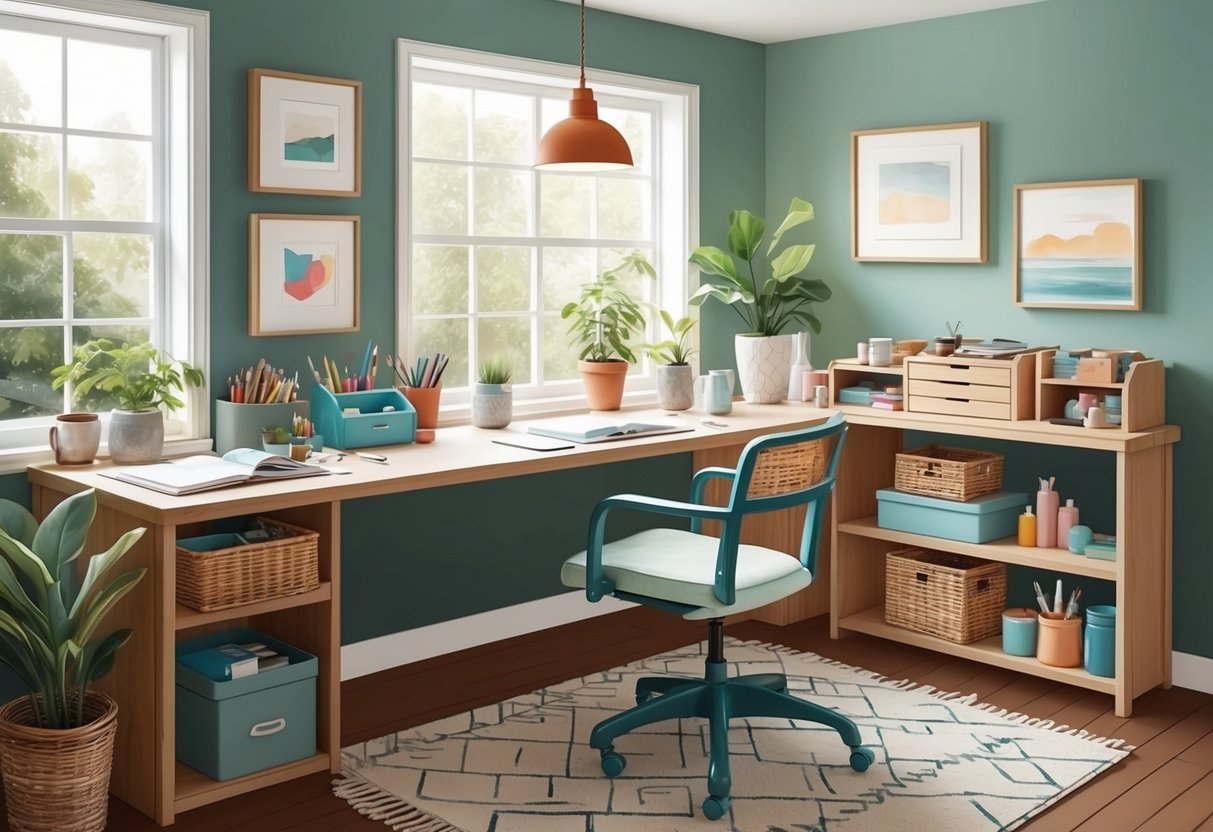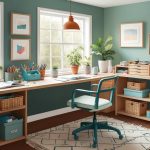
Establishing Consistent Creative Habits
Building strong creative habits is essential for anyone who wants to unlock their creative potential and experience personal growth. By focusing on making time for crafts, designing an environment that fosters calm and inspiration, and actively tracking improvement, individuals can sustain motivation and achieve more consistent results.
Setting Aside Time for Crafting
Dedicating regular time specifically for crafting helps transform creative work from an occasional activity into part of daily life. It is most effective to block out consistent windows in one’s schedule, treating crafting time as an appointment that cannot be missed.
Many find success creating routines—such as crafting each evening after dinner or starting the weekend with a creative session. Setting this habit encourages discipline and helps prevent life’s distractions from eating into time meant for creative projects.
A dedicated routine not only increases creative output but also reduces decision fatigue. By establishing a fixed crafting period, individuals can more easily tap into a creative mindset and make steady progress in their skills over time.
Consider using reminders or calendar alerts to reinforce consistency.
Creating a Calm, Inspiring Space
The physical environment has a notable impact on creativity. A clutter-free, organized workspace creates an inviting atmosphere where ideas can flow without distraction.
Choosing décor, colors, or objects that evoke calm helps reduce stress, allowing for deeper focus during crafting sessions. Natural light, comfortable seating, and good storage solutions further support a productive and enjoyable creative process.
Displaying finished crafts or inspirational materials can also trigger motivation and remind individuals of their creative journey. For those working in small spaces, even a portable kit kept ready for crafting can provide the same effect.
Taking time to personalize the workspace with meaningful touches enhances a sense of ownership and pride. By creating a calm, inspiring place, crafters can maximize their creative potential and look forward to their next session.
Tracking Your Progress and Growth
Monitoring progress is a proven way to maintain motivation and recognize personal growth in crafting. Keeping a simple journal, photo log, or project planner allows individuals to reflect on what they have accomplished and set future goals.
Regularly reviewing this record can reveal patterns, highlight skills that need development, and celebrate creative milestones. Some people benefit from using digital tools or apps designed for tracking habits and projects.
These can provide reminders, statistics, and visualizations of progress over time. Whether using pen and paper or technology, tracking helps to turn what might seem like small steps into visible achievements.
Acknowledging improvements, no matter how gradual, builds confidence and strengthens the desire to keep practicing creative habits. Consistent self-reflection is fundamental for anyone seeking to truly advance their craft and nurture continuous improvement.
Innovative Approaches to Crafting
Adopting innovative approaches can help crafters push boundaries and develop new skills. Tapping into new ideas and using unconventional combinations is often what leads to unique creations that stand out.
Exploring New Materials and Techniques
Experimenting with unfamiliar and trending materials opens up fresh creative opportunities. Instead of relying on typical supplies, crafters are encouraged to try eco-friendly papers, polymer clay, upcycled fabrics, silicone molds, resin, and even digital design tools.
Keeping a journal for notes, sketches, and ideas fosters inspiration and prevents creative blocks. This practice lets makers document observations, making it easier to revisit and expand on past innovations.
Mastering new techniques is equally vital. Techniques such as marbling, felting, or embossing can transform ordinary projects into something inventive and visually striking.
Joining workshops or watching online tutorials accelerates skill development. Regular practice and maintaining flexible routines enhance adaptability, as highlighted in this in-depth guide on nurturing innovation.
Blending Different Craft Forms
Combining multiple craft forms increases creative versatility and introduces unexpected results. For example, integrating embroidery with paper crafts, or adding calligraphy to painted ceramics, can breathe new life into traditional pieces.
This cross-disciplinary approach widens the skill set and stimulates original thinking. Collaboration between crafters further sparks innovative ideas.
Many artists benefit from group projects, learning sessions, and online communities where mixed-media experiments are encouraged. Tools and techniques borrowed from quilting, sculpting, and digital art can all be used together to produce pieces with rich textures and diverse visual effects.
Strategies for unleashing creative brilliance through these blended crafts include staying curious, documenting results, and remaining open to experimentation.



